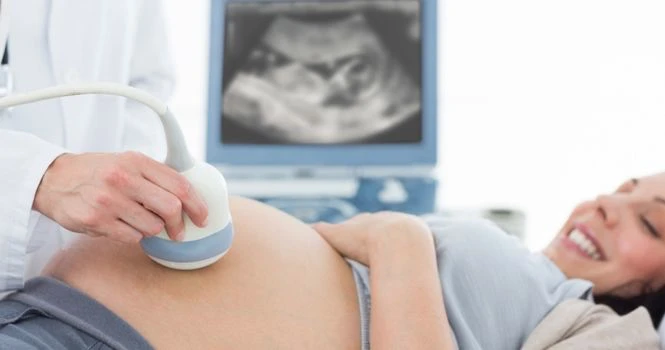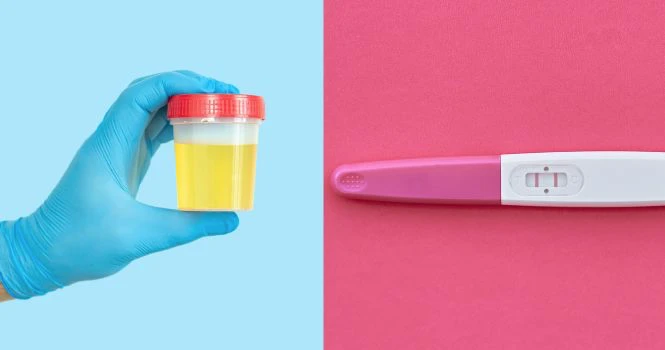Pregnancy is a journey filled with anticipation and excitement, as well as an array of medical procedures that ensure the health and well-being of both the mother and her developing baby.
One such procedure is the ultrasound, an essential tool in modern prenatal care.
We will look into ultrasound tests and their role in detecting and monitoring pregnancy.
What is an Ultrasound?
An ultrasound, or sonogram, is a non-invasive diagnostic tool that uses high-frequency sound waves to produce images of the body’s internal structures. When it comes to pregnancy, an ultrasound provides a window into the womb, allowing healthcare providers to observe and evaluate the development of the fetus.
How Do Ultrasound Tests Work?
An ultrasound machine includes a transducer, a handheld device that sends and receives sound waves.
During an ultrasound test, the transducer is moved over the skin or inserted into the body. It emits sound waves that penetrate the tissues and are reflected back to create an image on the monitor.
In the context of pregnancy, the sound waves penetrate the abdomen to reach the uterus. The waves bounce off structures like the uterine wall and the developing fetus to return to the transducer. The returning waves are then transformed into images, allowing the visualization of the pregnancy.
Detecting Pregnancy with Ultrasound
Transvaginal ultrasound:
This type of ultrasound is typically used in early pregnancy, usually before the 12th week. A small probe is inserted into the vagina to get a closer view of the uterus. It allows doctors to confirm pregnancy, measure the size of the fetus, check for multiple pregnancies, and estimate the due date.
Ultrasound tests can detect pregnancy as early as four to five weeks. At this stage, the ultrasound can confirm the pregnancy’s location (in the uterus) and reveal whether it’s a single baby or twins.
At 29 to 35 days, an ultrasound can detect a gestational sac and yolk sac. Heartbeat at 6 weeks, embryonic movements by 7 weeks.
An ultrasound at this stage can help determine the gestational age of the fetus and predict the due date.
The Role of Ultrasounds in Pregnancy Monitoring
While the initial detection of pregnancy is often performed via a home pregnancy test or a blood test, ultrasounds play a vital role in pregnancy monitoring:
Verification:
An ultrasound confirms the presence of a viable intrauterine pregnancy, which means the embryo has implanted in the uterus and not elsewhere, such as the fallopian tubes (Ectopic pregnancy).
Dating the Pregnancy:
An ultrasound can provide a more precise gestational age than using the date of the last menstrual period, especially if the woman’s periods are irregular.
Multiple Pregnancies:
Ultrasounds can determine if more than one fetus is present.
Transabdominal ultrasound:
Also known as the standard ultrasound, this type is used throughout pregnancy to monitor the growth and development of the fetus.
The Obstetrician applies a gel on the mother’s abdomen and uses a device called a transducer to send and receive sound waves that create an image of the fetus and other structures inside the womb.
3D/4D ultrasound:
These types of ultrasounds, which produce more detailed and lifelike images of the fetus, are often used in later pregnancy to evaluate the fetus’s anatomy and look for any abnormalities. They can also provide a more “realistic” image of the baby, which some parents may find enjoyable.
Anatomy Scan:
An ultrasound performed around 18-20 weeks of pregnancy, often called an anatomy scan or level 2 ultrasound, checks the fetus’s physical development, screens for any abnormalities, and can often determine the baby’s sex.
Growth and Well-being:
Later in pregnancy, ultrasounds may be used to monitor the baby’s growth, estimate fetal weight, observe the baby’s behavior and movement, and check the location of the placenta.
Conclusion
Ultrasound tests serve as a powerful tool in the detection and monitoring of pregnancy. They provide crucial insights into the progress and health of the pregnancy, ensuring that potential complications can be detected early and managed appropriately.
For expecting parents, an ultrasound also offers a first glimpse of their baby, making it an exciting step on the journey towards parenthood.













